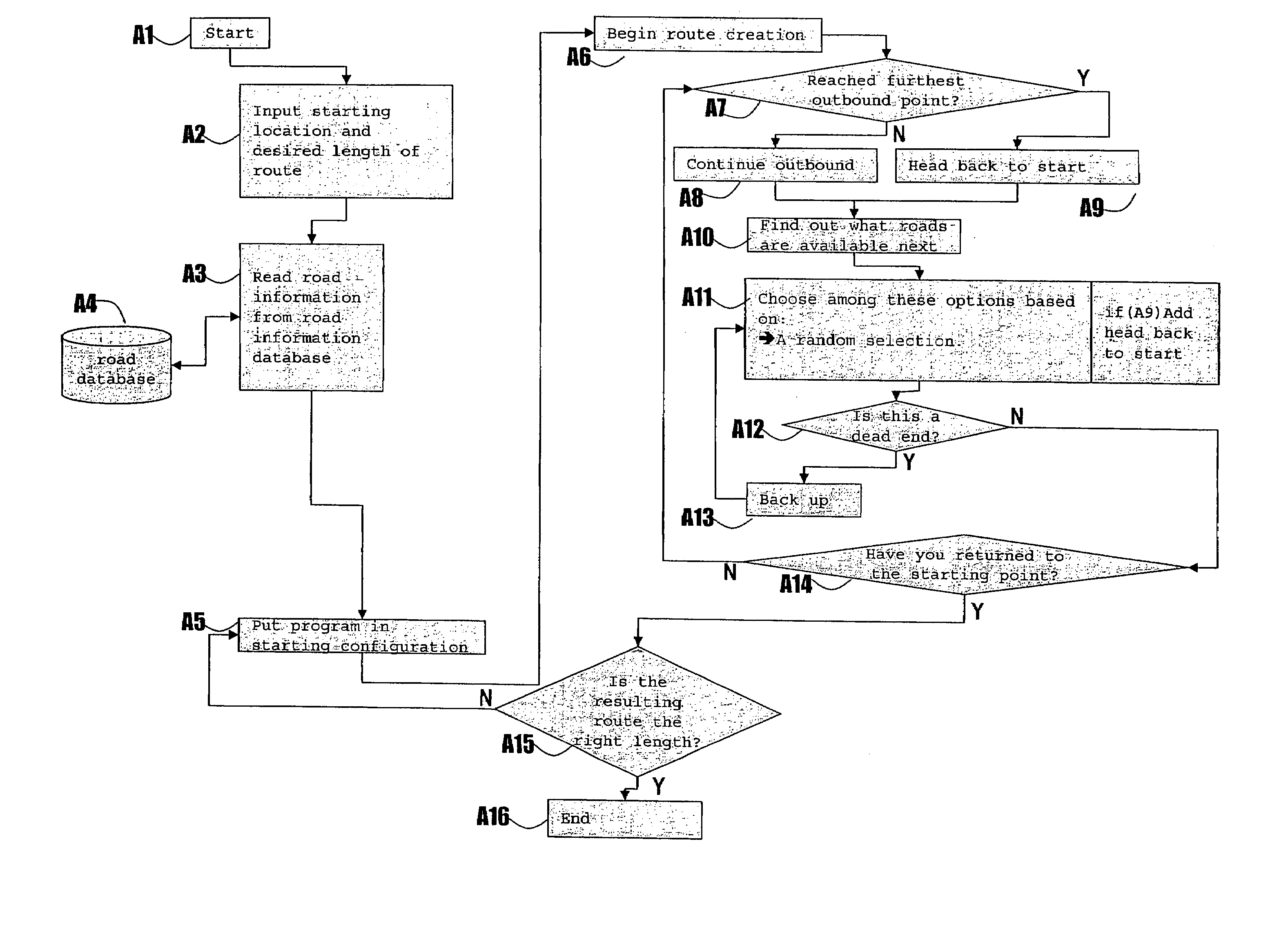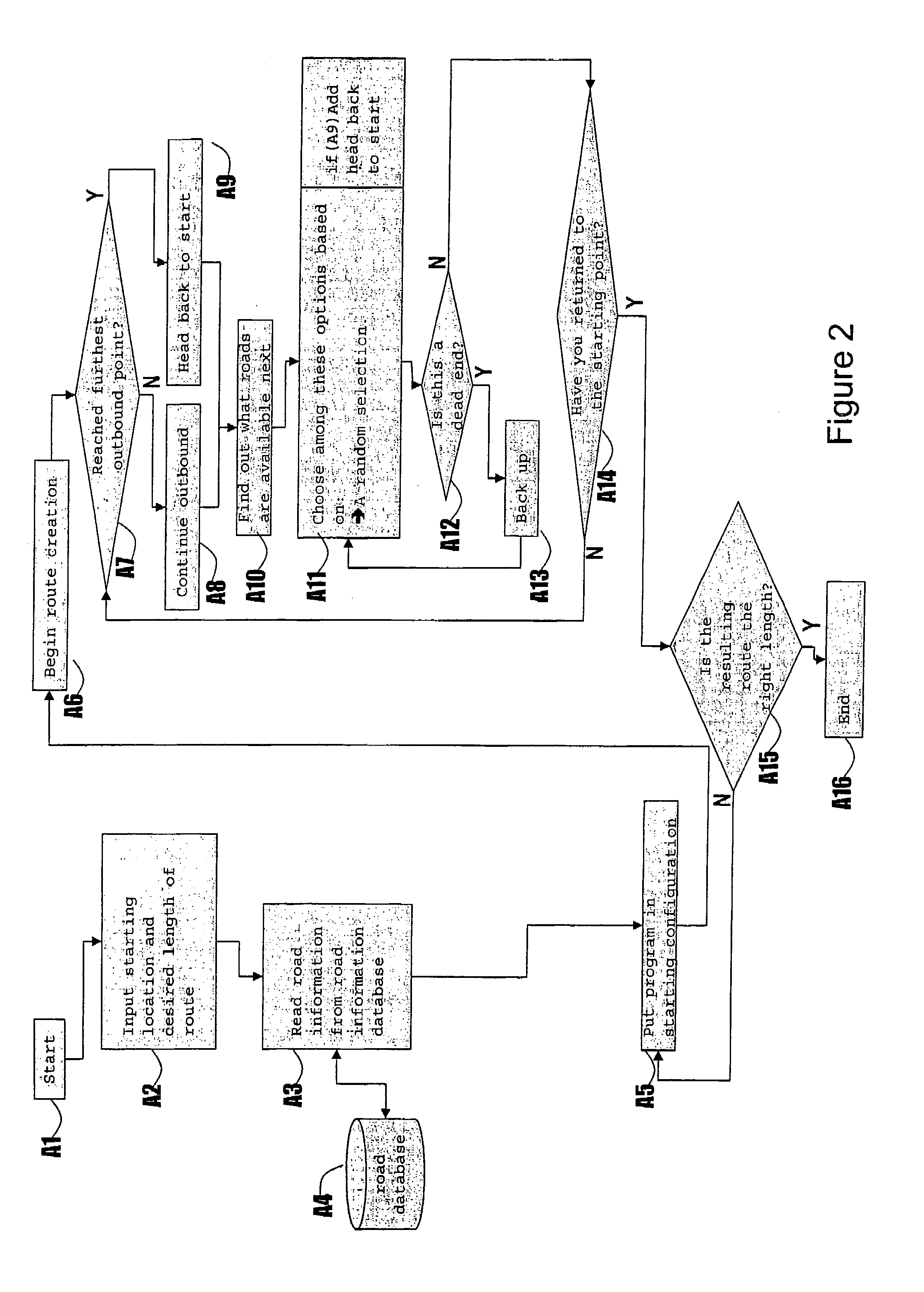Travel route mapping
a technology of route mapping and map, applied in the field of route mapping, can solve the problems that well-known point-to-point mapping applications are not suited to providing maps or turn-by-turn directions for such “closed routes"
- Summary
- Abstract
- Description
- Claims
- Application Information
AI Technical Summary
Benefits of technology
Problems solved by technology
Method used
Image
Examples
first embodiment
[0105]FIG. 25 is a block diagram of a travel route mapping system 100. An input unit 110 allows the entry of a starting point and a desired route length. Optionally at this point one can also enter route tuning parameters, such as weighting values for different types of roads, the direction that the route should take at the outset, target locations that the route should attempt to pass, etc. A road database 120 holds the list of roads and other geographic features upon which the system operates. Based on the input provided at input unit 110, a road selection unit 130 extracts roads from the database 120 that can be used in the creation of the final route. By using these roads and the other information provided at input unit 110, a route calculation unit 140 generates a route that satisfies the requirements of the user. Finally this route is presented to the user at output unit 150 in the form of a static map, an interactive map, a list of turn-by-turn roads (a “queue sheet”), etc.
second embodiment
[0106]FIG. 26 is a block diagram of a travel route mapping system 200. An input unit 210 allows the entry of a starting point and a desired route length. Optionally at this point one can also enter route tuning parameters, such as weighting values for different types of roads, the direction that the route should take at the outset, target locations that the route should attempt to pass, etc. A road database 220 holds the list of roads and other geographic features upon which the system operates. Based on the input provided at input unit 210, a road selection unit 230 extracts roads from the database 220 that can be used in the creation of the final route. In parallel, and again based on the input provided at input unit 210, a target identification unit 260 identifies roads that the route should attempt to pass along its course. The target identification unit 260 checks to see if these targets correspond to roads that have already been extracted by the road selection unit. If not, th...
PUM
 Login to View More
Login to View More Abstract
Description
Claims
Application Information
 Login to View More
Login to View More - R&D
- Intellectual Property
- Life Sciences
- Materials
- Tech Scout
- Unparalleled Data Quality
- Higher Quality Content
- 60% Fewer Hallucinations
Browse by: Latest US Patents, China's latest patents, Technical Efficacy Thesaurus, Application Domain, Technology Topic, Popular Technical Reports.
© 2025 PatSnap. All rights reserved.Legal|Privacy policy|Modern Slavery Act Transparency Statement|Sitemap|About US| Contact US: help@patsnap.com



